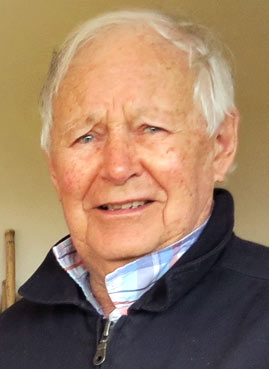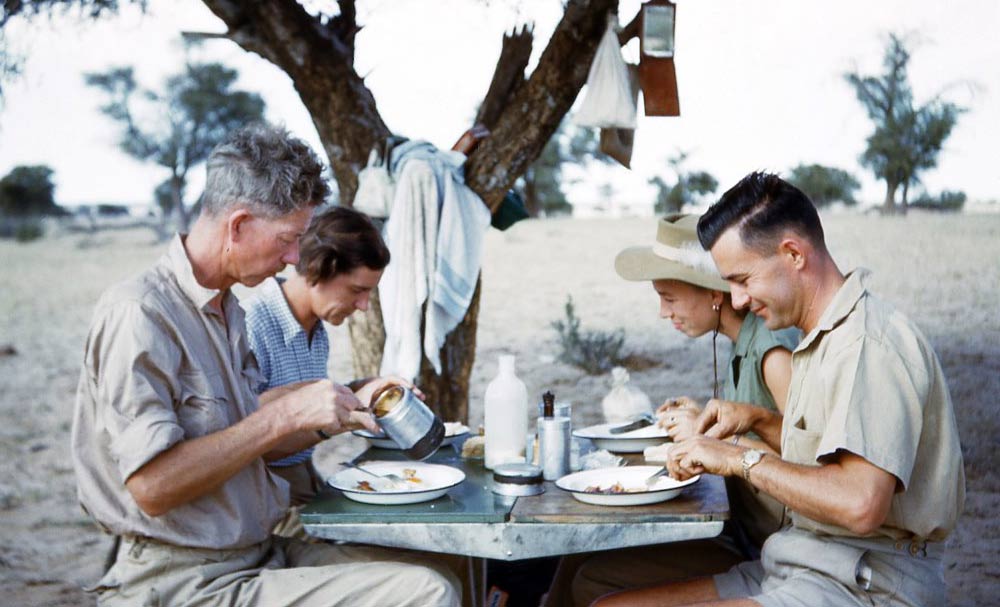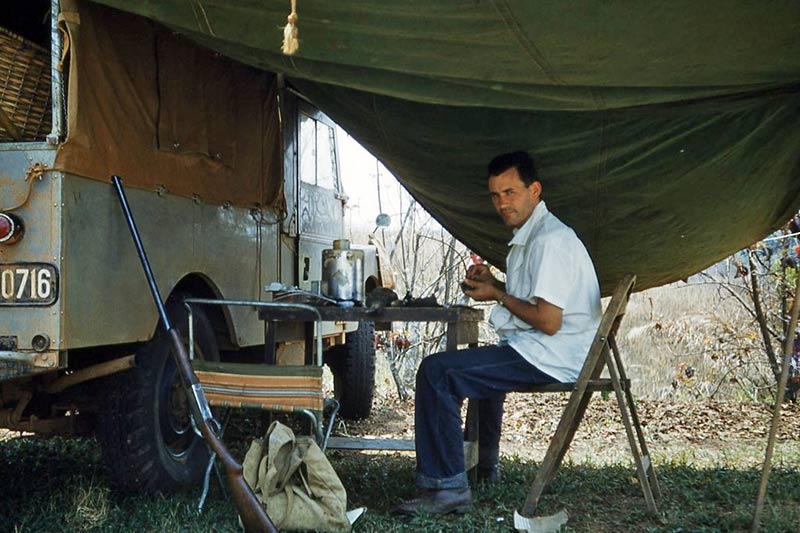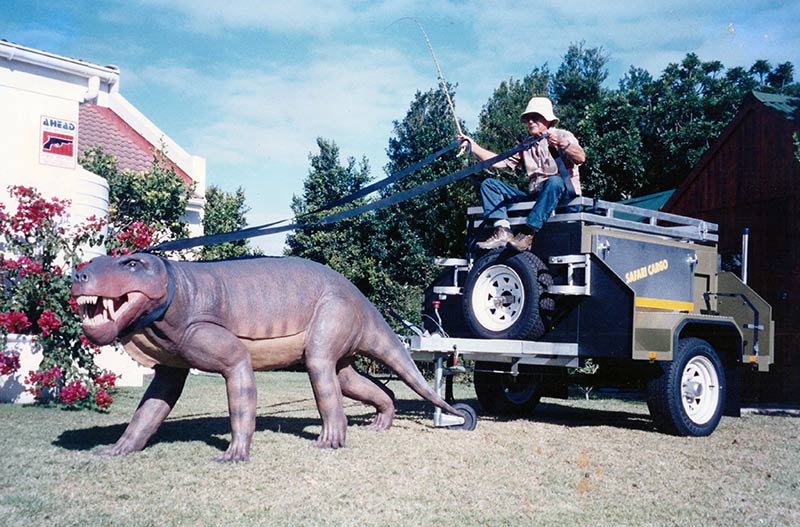
Date of Birth: July 19, 1926
Place of Birth: Republic of South Africa
Current Location: Humansdorp, Eastern Cape, South Africa
Terence Coffin-Grey was born July 19, 1926, to South African pioneering stock in Port Elizabeth, Eastern Cape Province, South Africa. He keeps a hand written diary from 1940 to this day. Given his advanced age of 92 he is currently in good health. At an early age he, developed into an avid hunter, naturalist and taxidermist as he roamed the veld of the Eastern Cape with his twin and elder brother. When the boys turned 13, their father seeing their interest in making a ‘museum’ in their bedroom, bought them Practical Taxidermy by Montagu Browne, a British taxidermist. The boys skinned and mounted everything they collected from, birds and small mammals, to snakes, lizards and fish. Lack of funds prevented young Terence from attending university so he joined the Post Office as a telegraphist in 1943, although his heart’s ambition was to join a museum and travel Africa as a taxidermist/explorer like Carl E. Akeley.

In 1948 he married Yvonne Hefferon and at that time, Southern Rhodesia (Modern Day Zimbabwe) was welcoming immigrants so in 1950 the couple moved to Bulawayo. Soon Terence was mounting birds and mammals in their small dining room. An advertisement in the Bulawayo Chronicle for a museum taxidermist/technician caught Terence’s eye and when he applied, he impressed the Director of National Museums of Rhodesia, the great naturalist Dr. Reay H. N. Smithers (O.B.E.). Thus began Terence’s journey with The National Museums and Monuments of Rhodesia and Nyasaland.
Dr. Smithers tutored Terence and in 1961 gave him the enormous responsibility of assisting in the internal architecture of the new Natural History Museum in Bulawayo. There he created many large exhibits, the most spectacular of which was a giant walk-in habitat group which displays the Doddiburn elephant and full mounts of giraffe, eland, zebra, warthog, buffalo, waterbuck and a pride of lions on a zebra kill in the Lowveld Hall. In 1965, Terence went for additional training at the Carnegie Museum in Pittsburgh, Pennsylvania, USA, under the tutelage of Otto Epping. There was also further training in Germany with Karlheinz Fuchs, an expedition to the Okavango delta of Botswana with H.R. H. Prince Bernhard of the Netherlands and some time at the British Museum.
In 1952, Terence as a courtesy by the National Museum in Rhodesia to Rowland Ward of London , spent two months on an expedition where he prepared hides and skulls for transportation to London. A giant sable antelope, Hippotragus niger variani, (Varian’ts sable), a White-bearded gnu and a Black-faced impala were ultimately mounted by Gerald Best of Rowland Ward and donated to the British Museum from that collecting trip.

Later in 1958 Terence accompanied Dr Elliot Pinhey, entomologist, throughout all of West Africa. Following rivers, while Dr Pinhey was specialising in dragonflies and damselflies, Terence collected birds and small mammals. It was a gruelling three month trip by Land Rover going through Chirundu, Elizabethville (Lubumbashi), Goma on Lake Kivu, Stanleyville (Kisangani), Leopoldville (Kinshasa), over the Congo River, Brazzaville, on to French Equatorial Africa (Republic of Congo, Chad, CAR, Cameroon and Gabon), through British Cameroon to the town of Mamfe in French Cameroon. Here they stayed at the Palace the Fon of Bafut. Shortly afterwards Dr Pinhey became severely ill and at an American Presbyterian Medical Mission, found that Terence had a bad case of malaria. Dr Pinhey was flown home and Terence faced the long trip home alone and almost out of funds.
In 1962 Terence reunited with Dr Pinhey to the Congo via Lusaka to rescue a very important collection of Insectivora in the museum in Elizabethville, now Lubumbashi. The British High Commission in Elizabethville came to their rescue by meeting the National Museum Land Rover at the border and driving them to the rebel held Museum in their own vehicle. The rebels considering the insect collection to be ‘takati’, controlled by wizardry, did not damage any of the beautifully made cases. The collection is in the Transvaal Museum, now the Ditsong National Museum of Natural History. Later that same year, Terence was asked by Rhodesian National Parks to collect live white rhinos, which were safely driven 1200 miles. Terence was sought after to accompany the Denver Museum of Natural History when they came in 1969 to collect specimens in Southern Africa in the Kalahari, Okavango and Rhodesian bush.
Museum salaries have never been enough to comfortably live on so Terence started Taxidermy Enterprises with Yvonne in the 1960’s. Safari hunting was big business and Taxidermy Enterprises flourished. Terence worked at the National Museum until 1978 and it was about this time that he and Nico Van Rooyen founded the Taxidermy Association of Southern Africa (TASA). Their aim being to raise the standard of taxidermy in Southern Africa by holding workshops for interested taxidermists and they gave may years of service to this organization..
In the early 1980’s, Terence and Yvonne sold Taxidermy Enterprises and moved back to South Africa. Terence not yet 55 years old had already achieved so much in the field of taxidermy but he could not sit idle. With the able assistance of Terry Donnelly, one time National Museum artist, he created a museum for Fred Burchell, Mpongo Park, East London. On display are the birds and animals named by Burchell’s great-uncle W.J. Burchell. Terence married Terry, after Yvonne passed away. Around 1990, came the creation of a new taxidermy studio, Taxidermy Africa, in Humansdorp, Eastern Cape with daughter Cathy and son-in-law John Peacock. This offered the opportunity for Terence to pass on his wealth of knowledge to a new group of would be taxidermists.

Not content with the day to day teaching of new talent, Terence struck out on another new project once again ably assisted by Terry Donnelly. The sculpting of early hominid and prehistoric creatures for the McGregor Museum in Kimberley and the Albany Museum in Grahamstown. These had to be scientifically correct, problematic as there are many boffins out there and the internet can make life interesting. Using his years of experience in sculpting, moulding and casting Terence produced, to the scientist’s satisfaction, replicas of Australopithecus africanus, Homo erectus(Brokenhill man) and Aulacephalodon, 253 million years old.
Terence Coffin-Grey’s many talents and experiences which he has unselfishly shared throughout his life has certainly earned him the title of “Master Taxidermist.”

Induction
On July 24, 2021, Terrence Coffin-Grey was officially inducted into the Taxidermy Hall of Fame by THOF Board Member Ken Edwards of Georgia during the 2021 National Taxidermists Association’s awards banquet. A pre-recorded acceptance speech had been prepared by Terrence’s daughter, Cathy Peacock, which was played to the crowd attending the banquet. Below is the video of his acceptance speech.

